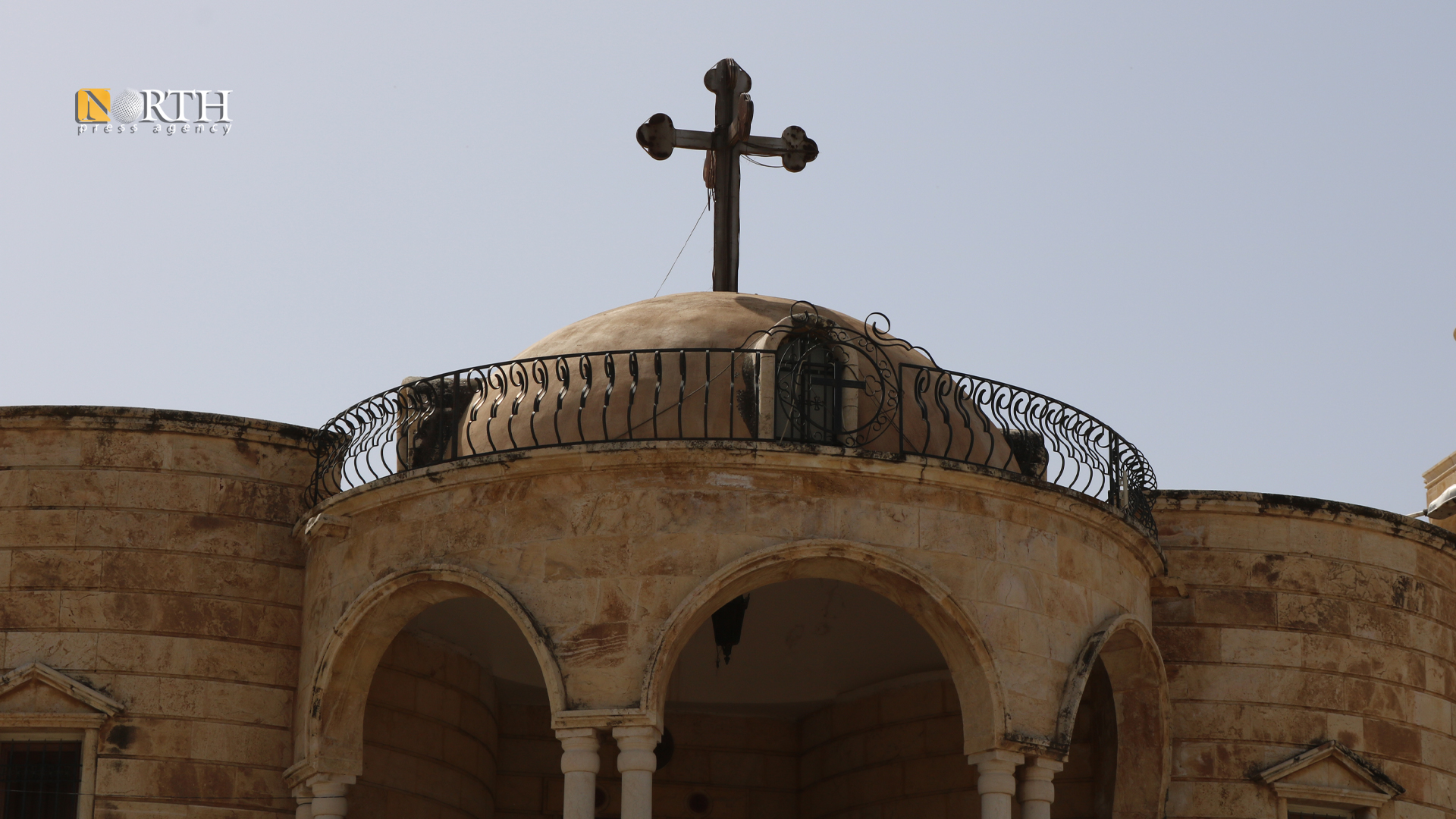HASAKAH, Syria (North Press) – Near the remote village of Tel Wardiat, outside of the small town of Tel Tamr, Syria, sits St. Mary’s Monastery, a tribute to the deep-rooted Syriac heritage of the Khabur River basin.
Located 25 kilometers from the city of Hasakah, on the road to Tel Tamr, the monastery belongs to the Syriac Orthodox Church. Construction began in 1993 on the facility, and it currently sits on more than 60 hectares of land.
The monastery was inaugurated on February 15, 2000, by Ignatus Zakka I Patriarch of the Syriac Orthodox Church of Antioch and All the East and Supreme Head of the Syriac Orthodox Church.
The monastery includes a large church that seats 200 people and bedrooms prepared for monks, priests, tourists, and expatriates. Homeless families can also stay in the monastery, which holds 30 rooms for 50 people, three halls, and a restaurant.
Ephram al-Henno, the priest who runs the monastery, said, “the monastery is one of the most prominent landmarks in this region, and it is an extension of the landmarks that are in Turkey today,” referencing the Monastery of Zaafran and Gabriel Monastery which are located in historic Syriac areas in present-day Turkey.
“The main goal of this monastery is that it contains all segments of society, and there are also cultural, productive, and educational groups teaching the English, Kurdish, French, and Syriac language,” al-Henno added.
He added, “A monastery is usually built for the monks to live in, but the conditions that the region experienced did not attract monks to it. I am the only one here with a number of families and deacons to serve the monastery. We pray in the morning and evening, and Sunday is a day for mass, where people gather, especially from the beginning of April until the end of September.”
Al-Henno explained that the war in Syria turned the monastery into a shelter. During ISIS’ attack on southern Hasakah in 2015, the Assyrian and Syriac communities spread in Tel Tamr and 33 villages along the Khabur River came under threat, and almost 200 families sought refuge in the monastery. The monastery had also acted as a shelter during the attacks on villages outside of Sere Kaniye by al-Nusra Front in 2012-2013 and during the most recent Turkish invasion of Sere Kaniye in 2019.
“This day is tragic for us,” al-Henno says of February 23, 2015, when over 230 people were kidnapped and nearly a dozen were murdered. ISIS also destroyed 11 Christian churches in the Khabur area villages, some of which still sit in ruin.
“The monastery was bombed and received many threats from radical groups such as ISIS and al-Nusra Front,” al-Henno told North Press. “They besieged the monastery for about 3 months, but the resistance of the People’s Protection Units (YPG), the Women’s Protection Units (YPJ), and the Khabur Guard forces eliminated the threat.”
While the monastery was never overrun, it did sustain damage which is still evident. The “The number of visits has decreased a lot over the past five years, and the external structure was also damaged,” al-Henno explains, adding that a shell fell on one of the monastery’s domes and on their walls, causing structural damage.
“The monastery is considered a shrine for everyone, where people come to be blessed, and some of them pray whether they are Christians, Muslims, or Yazidis,” al-Henno concluded.

